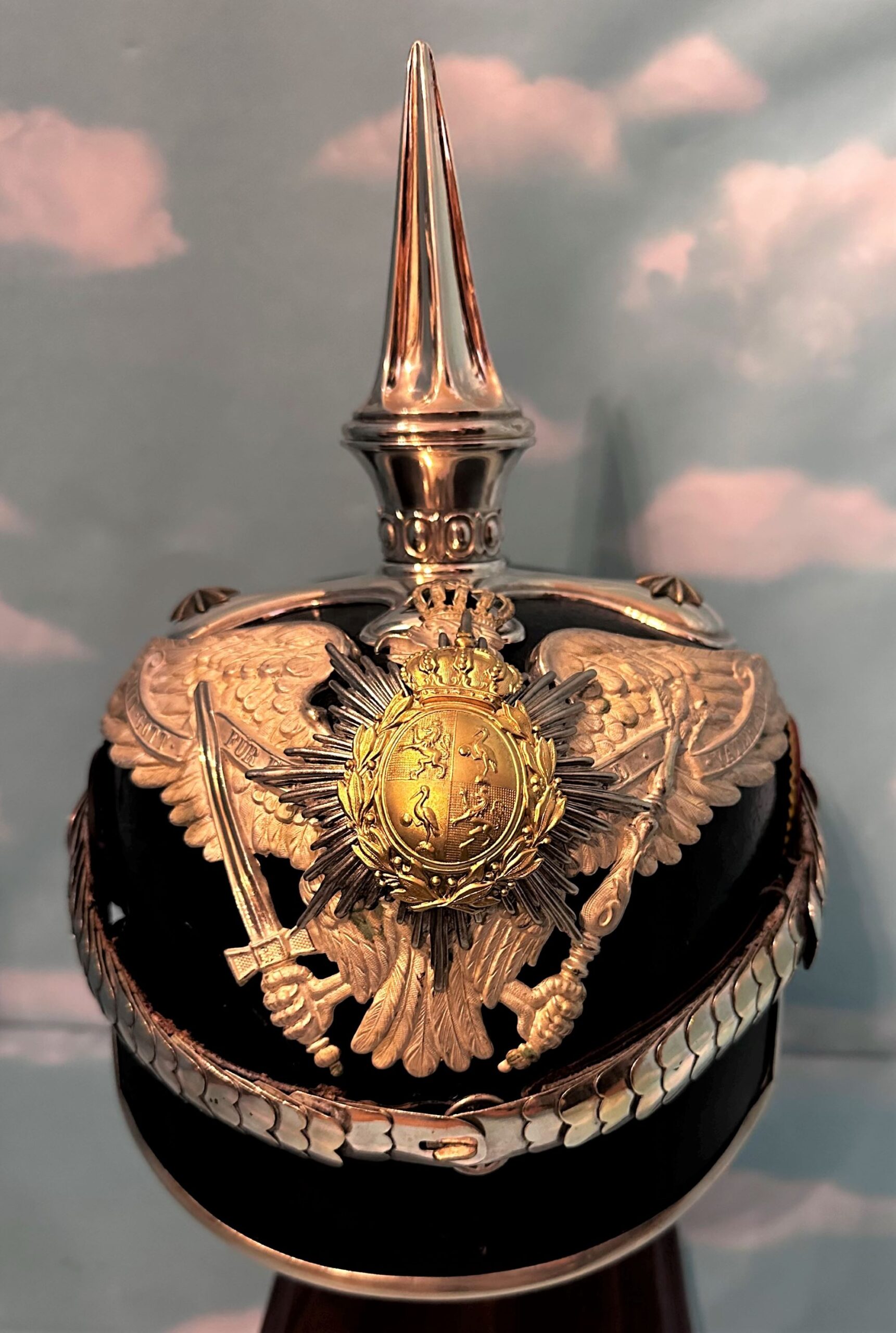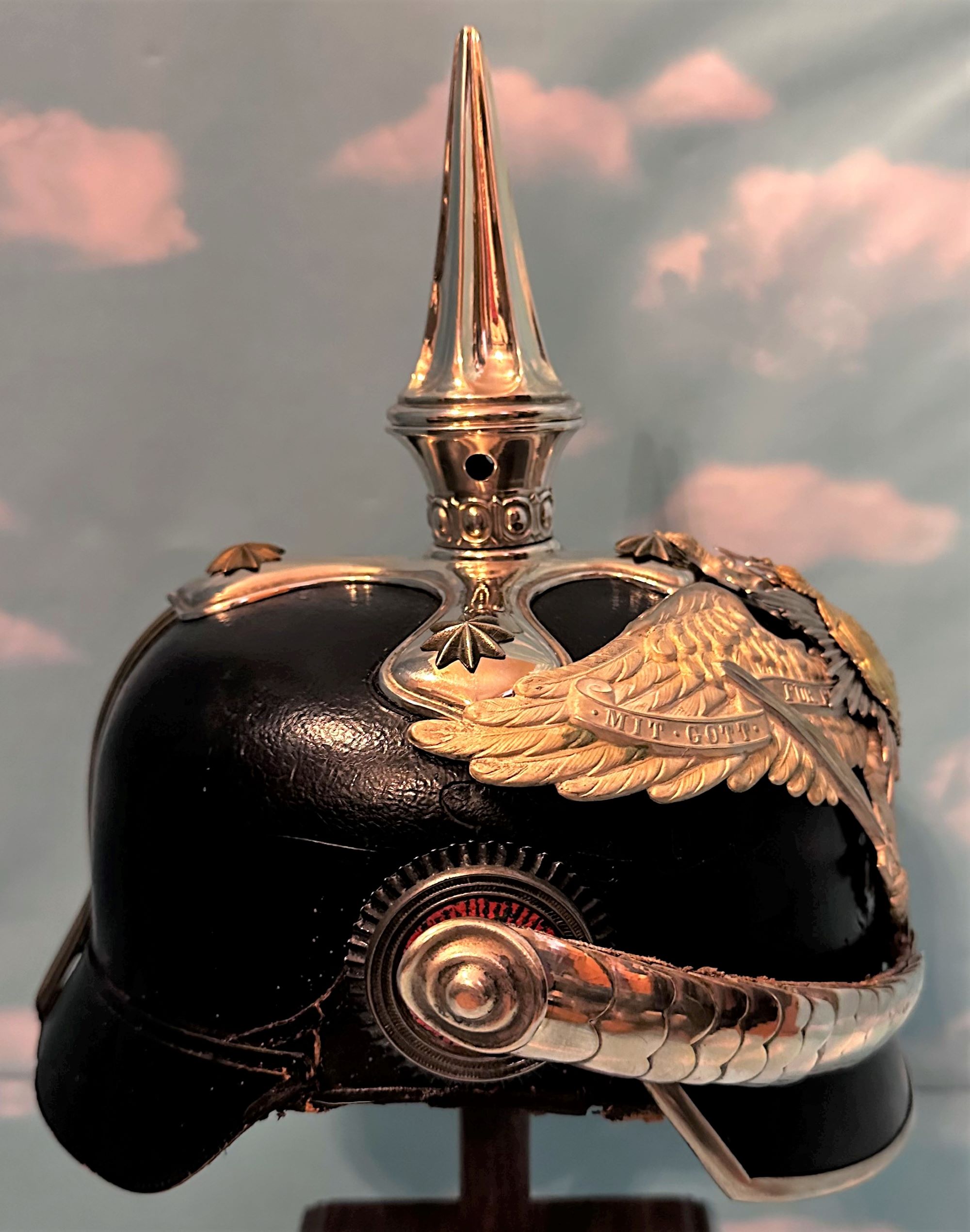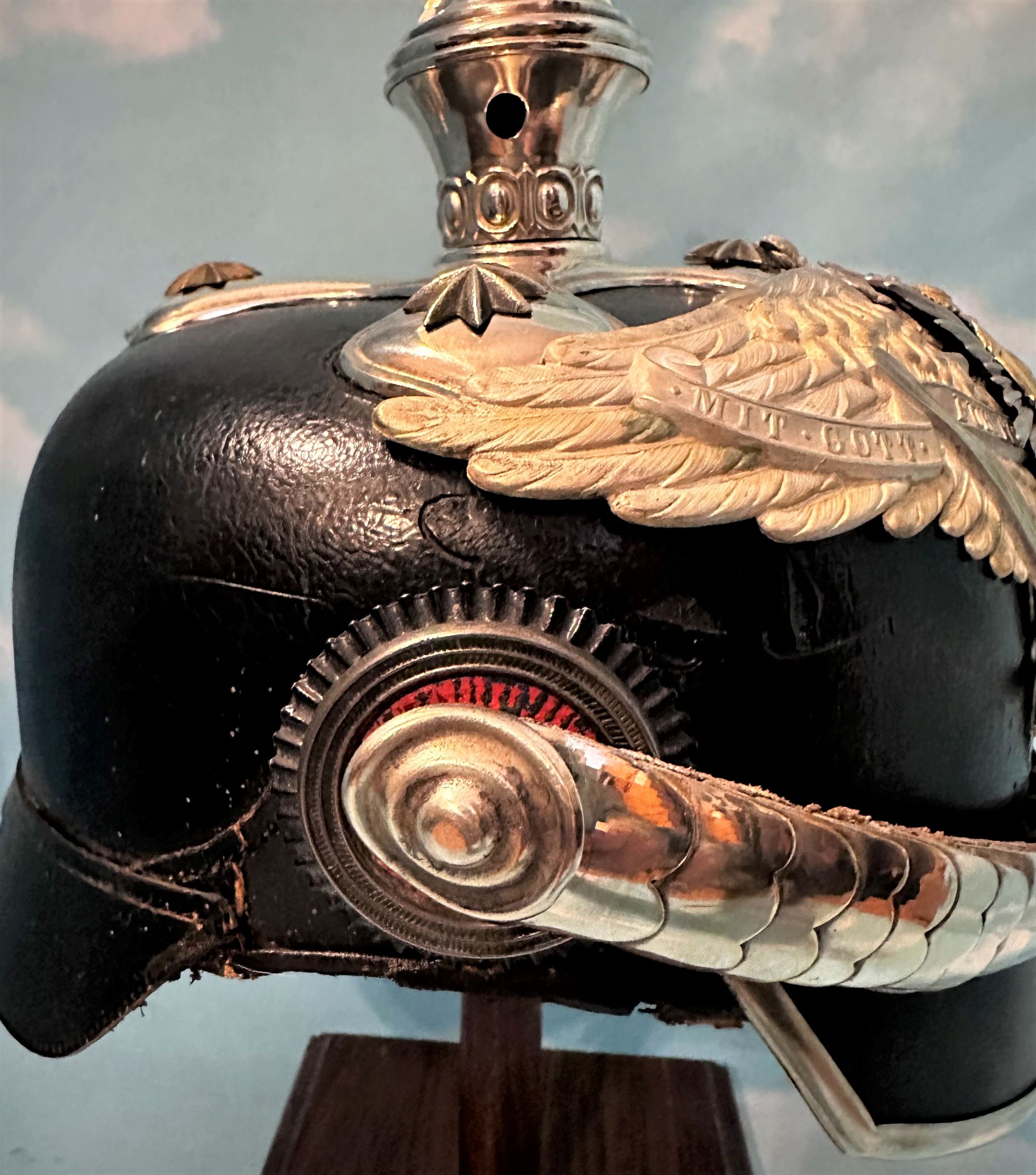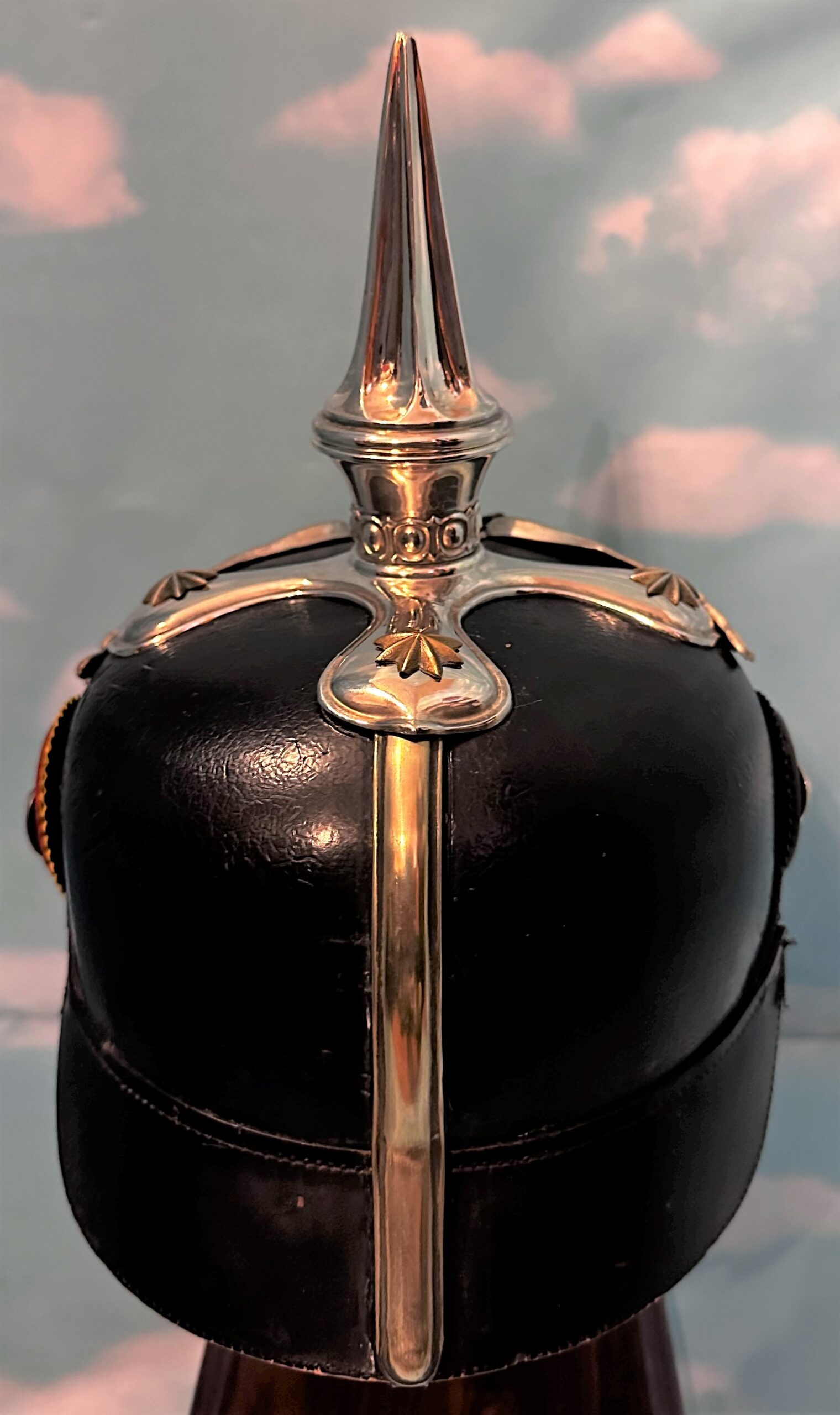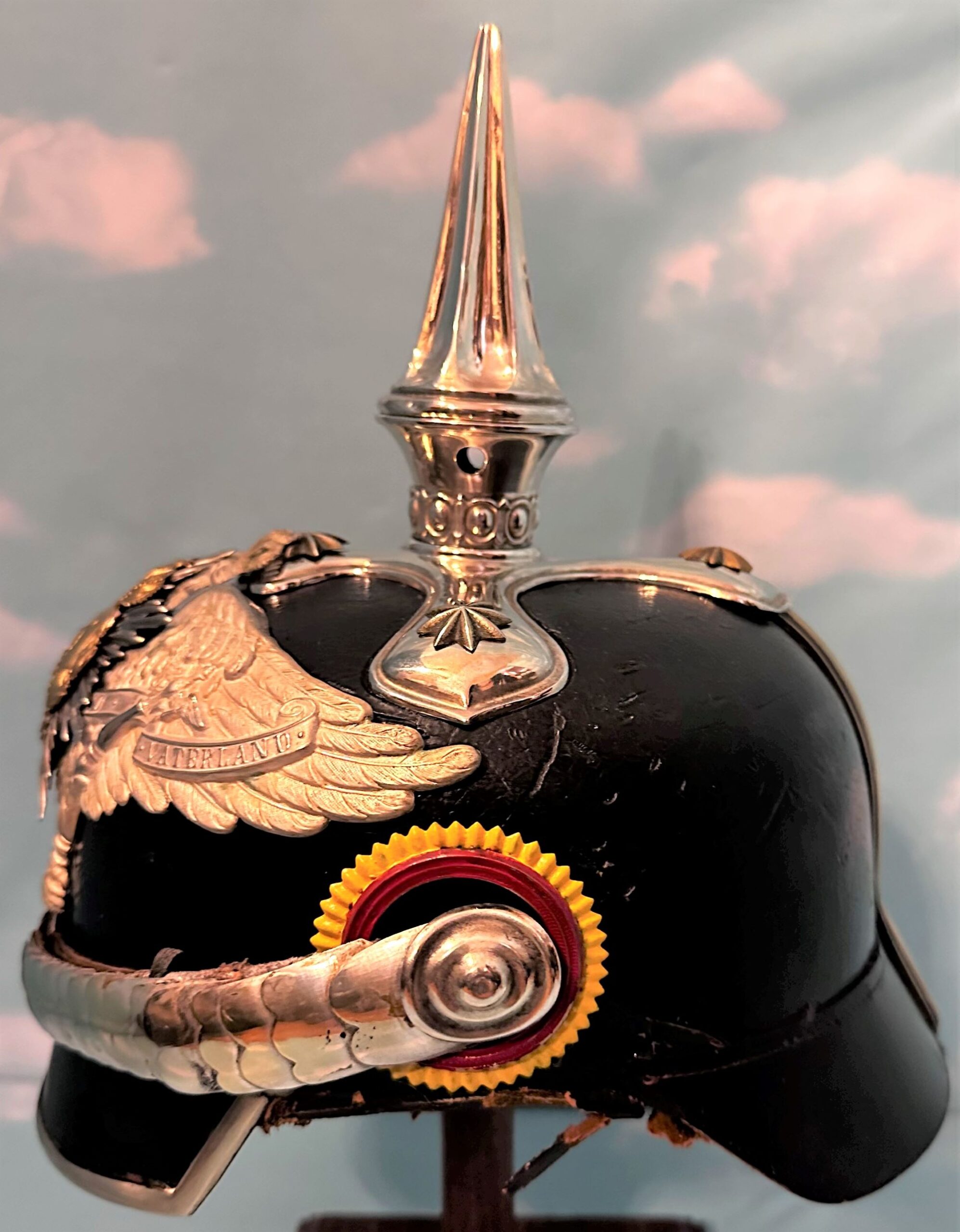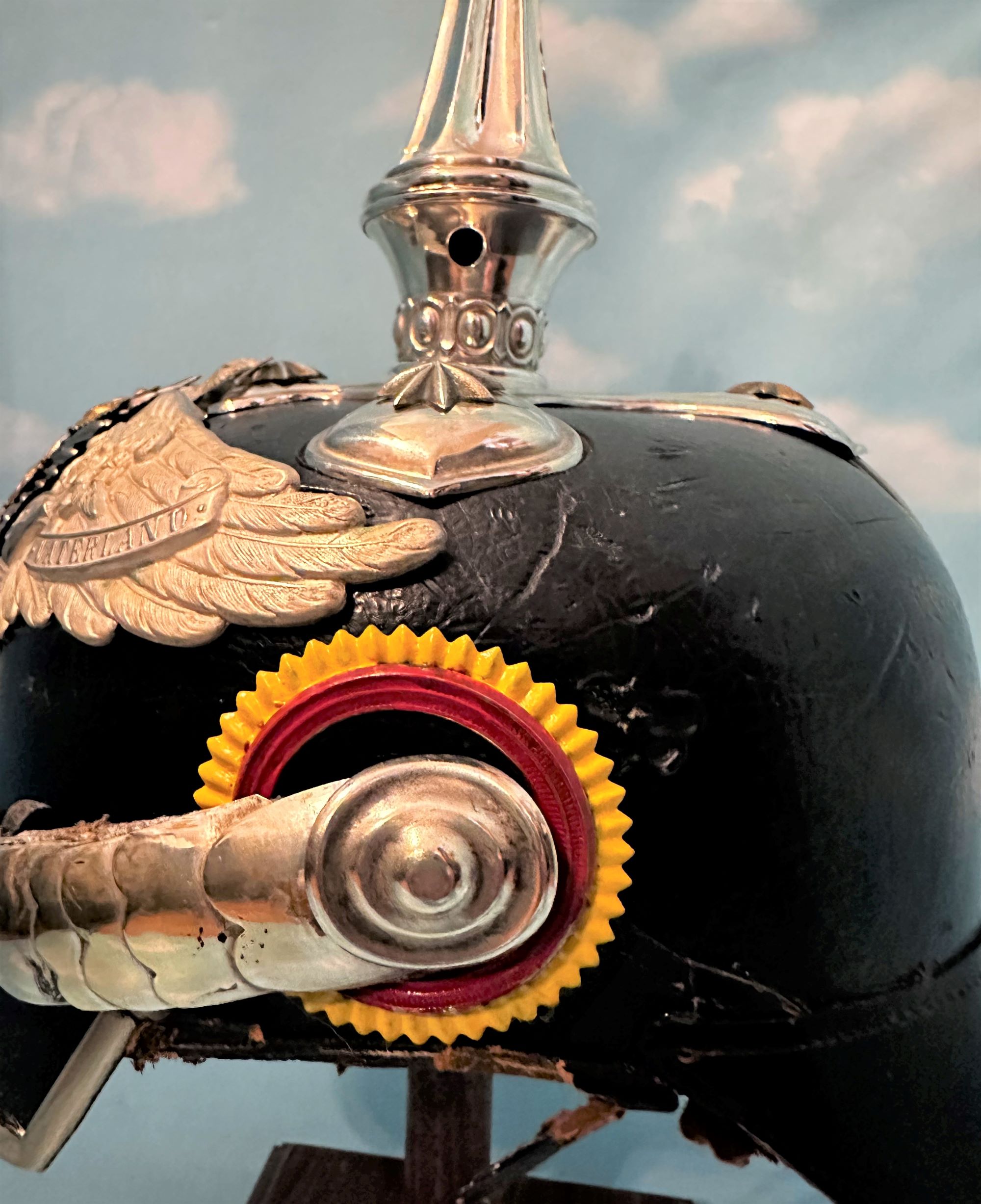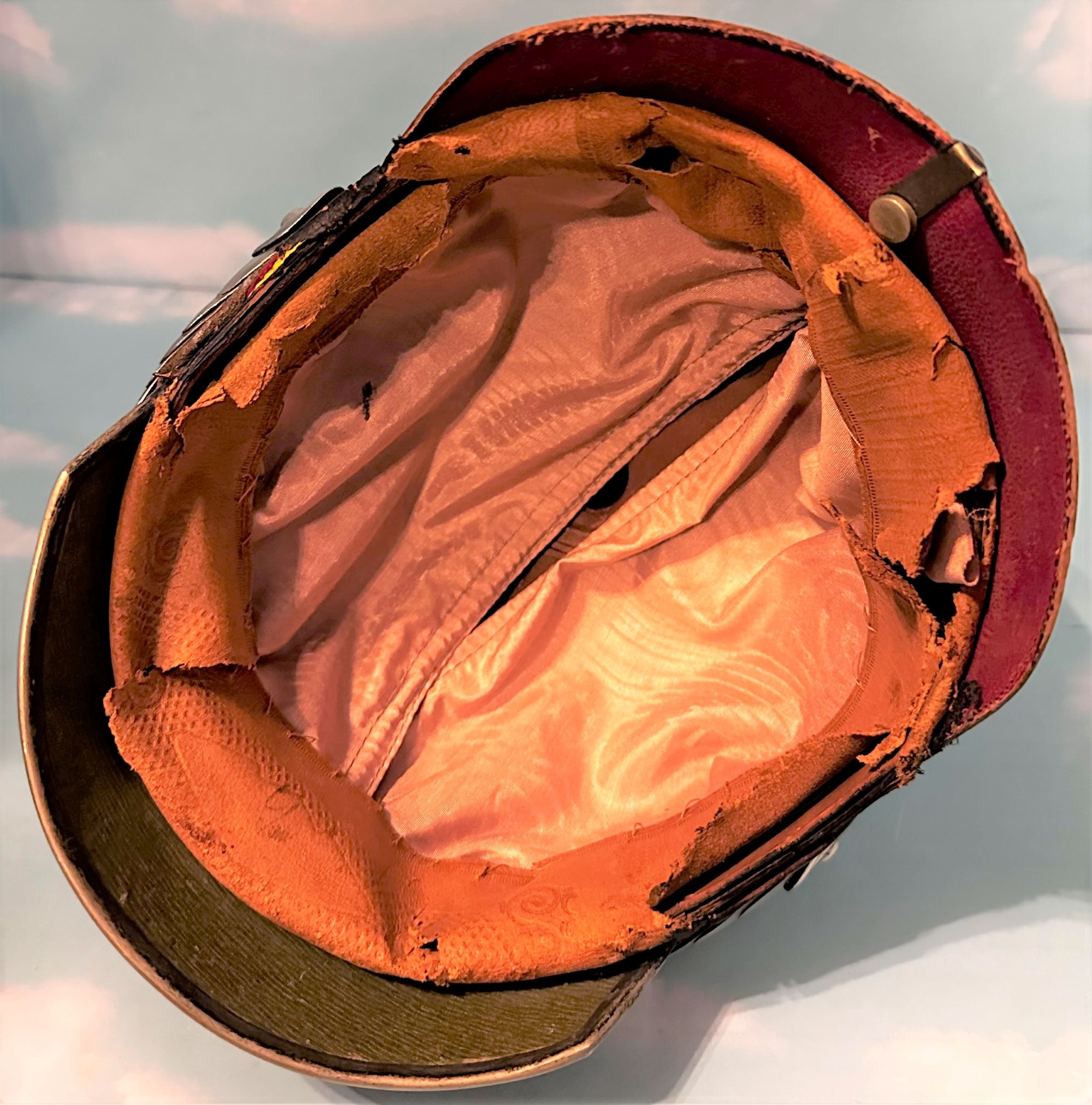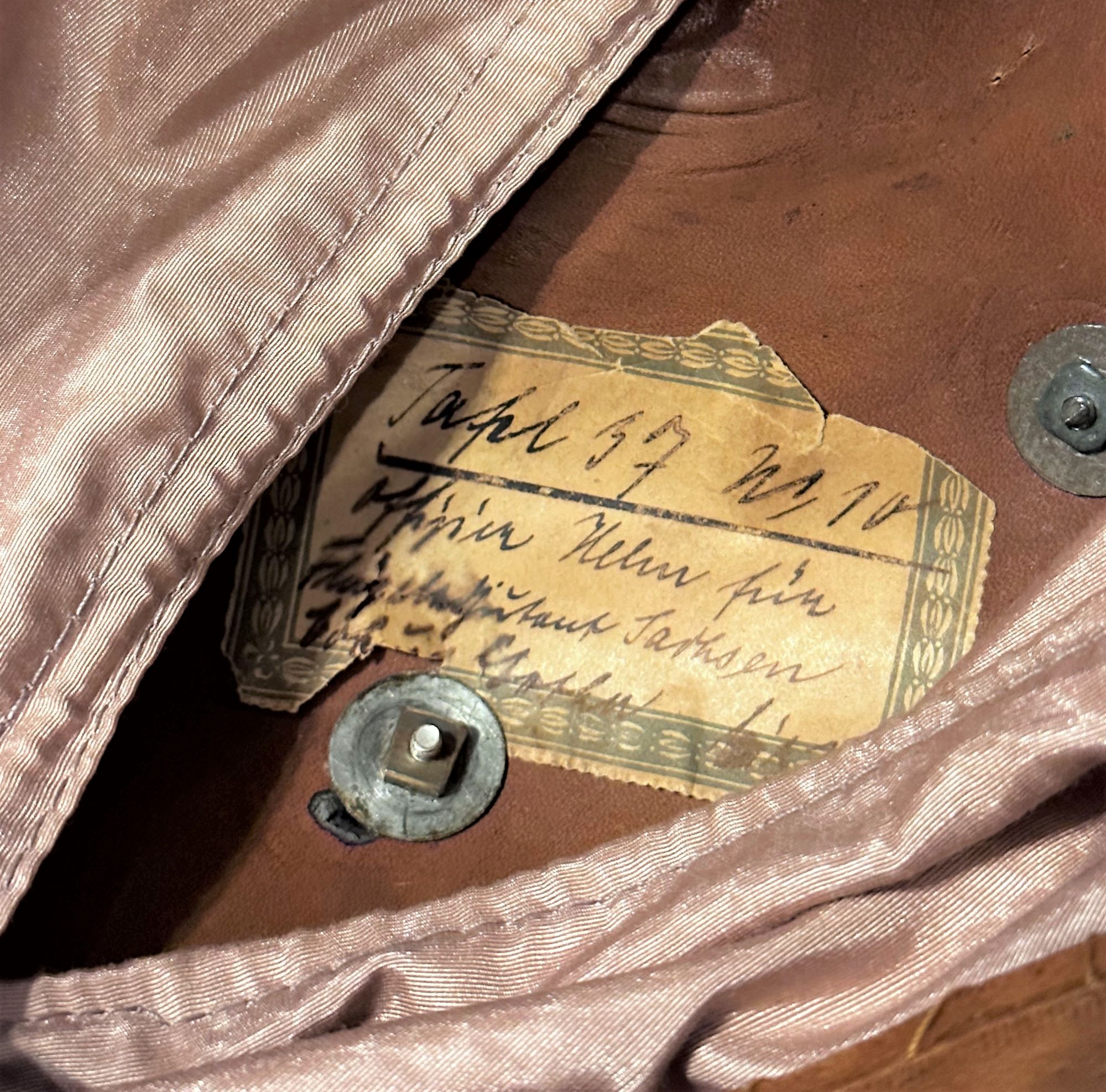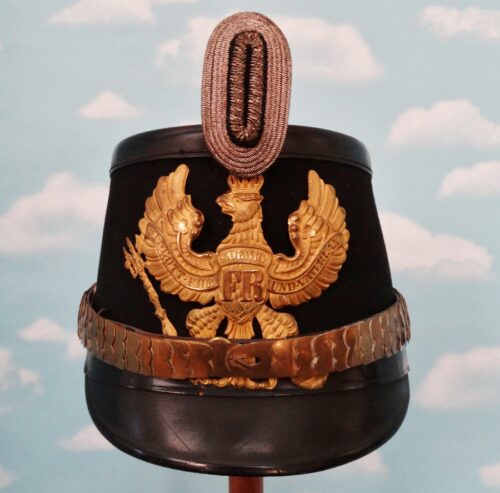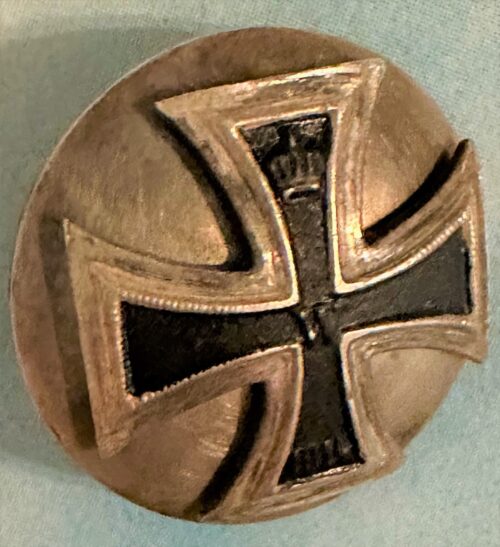Description
The Flügel Adjutants for Reuss wore two variations of helmets, both based on the Prussian Dragoon style, featuring a squared-off front visor and silver metal fittings for the spike, trim, and chin scales. The helmet plate for the Flügel Adjutant to the Older Reuss Prince showcased a Guard Eagle with “FUERST” replacing “KOENIG” on the motto banner. The eagle was silver with a gold eight-pointed star on its chest, adorned with a gold Reuss coat of arms surrounded by a gold laurel wreath (no enamel). The Flügel Adjutant to the Younger Reuss Prince had a similar helmet, but with a silver eight-pointed star on its chest, surrounded by a gold laurel wreath and the same gold Reuss coat of arms.
This specific helmet is for the Flügel Adjutant to the Younger Reuss prince. The interior of the helmet has a tag that suggests it was previously owned by a museum, although it is difficult to read all the words on the tag. The helmet appears to have undergone restoration as evident by the paint on the kockarden and Reuss device. The body of the helmet is intact, and the interior is clean, but the brown leather sweatband shows some signs of wear, with tears along the edge and across the band.
Overall, this is a rare and valuable helmet, a worthy addition to any helmet collection.
Flügel Adjutants were military officers who served as aides-de-camp to high-ranking military officers or heads of state. In the case of the Reuss family, the Flügel Adjutants served as personal aides to the reigning Princes of the German states of Reuss. These officers were responsible for carrying out various duties, including relaying messages, attending to the prince’s personal needs, and organizing various ceremonial events.
The Reuss family was one of the oldest and most distinguished noble families in Germany, with a lineage that can be traced back to the Middle Ages. The family ruled over two separate states, Reuss-Gera and Reuss-Greiz, until the abolition of the German monarchies in 1918.
The Flügel Adjutants for the Reuss family were typically outfitted in distinctive uniforms and were often given special ceremonial roles. As noted in the product description, these officers wore helmets that were based on the Prussian Dragoon style of helmet, with silver metal fittings and distinctive helmet plates featuring the Reuss coat of arms and other symbols of the family’s power and prestige.
